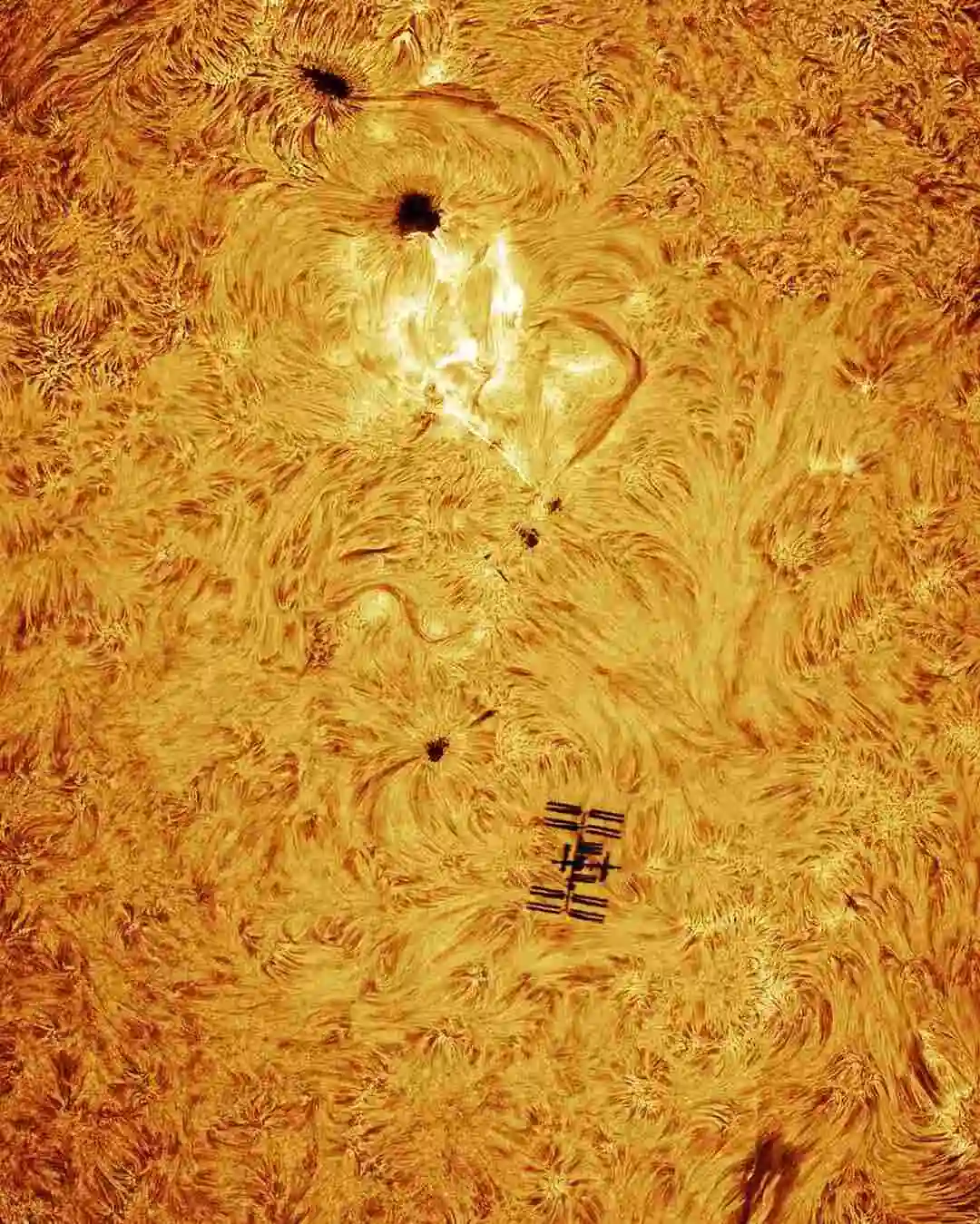Arizona-based astrophotographer Andrew McCarthy, known for his creative and stunning astrophotos, has captured a remarkable image of the International Space Station (ISS) transiting the Sun, framed perfectly against a flaring solar region. This photograph reflects his technical mastery and relentless dedication.
With over 1.5 million followers on Instagram and more than 400K followers on X, Andrew has made significant contributions to astrophotography and astronomy.

His recent capture of the ISS transit has captivated audiences on social media platforms, including Instagram and X (formerly Twitter).
Commenting on his work, users on Instagram expressed their admiration, saying, “Your work is absolutely awesome. Thank you for sharing your patience, effort, and skills with the world.” Another user remarked, “This has to win an award. Where can I vote?”
Andrew McCarthy shared the story behind the image in an exclusive interview with Wonders In Space.
Here’s the full interview:
What inspired you to attempt this particular shot?
Andrew: I have always wanted to combine hydrogen alpha solar imaging with International Space Station transits and have previously attempted many with mixed results. This upcoming transit was the first that had a large active region towards the center of the disc, so I thought it was a great opportunity to try and get a really unique composition.
Where did you go to capture the event, and when was it taken?
Andrew: I went to a remote location in the middle of the Sonoran Desert, near Gila Bend, AZ. I had to get there via a dirt road, with many warning signs along the route about the dangers of the desert. I found a clearing amidst many Saguaro cacti and cholla plants where I set up my telescope. The best time to capture a transit like this is when the sun is right overhead, so it was captured shortly after noon in the heat of the day.
What equipment and settings did you use?
Andrew: I had several telescopes running for redundancy, but the main system I used was a modified Esprit 150 telescope with a Player One Apollo M-Max camera. The image was captured at 0.3 milliseconds, with 100 gain, and in 16-bit SER format for maximum quality.
Were there any special preparations or difficulties you faced?
Andrew: Definitely, the biggest challenge was the heat. I had a temp reading of 121° from my car’s exterior thermometer while I was working, and some of my equipment reached 130°F. At those temps, computers shut down and cameras stop working right. These conditions have caused many previous attempts to fail. To mitigate this, I brought several ice packs and thermoelectric coolers to keep the electronics (and me) cool.
How did it feel when you finally saw the image come through?
Andrew: It was quite thrilling, particularly as the active region began flaring right before the transit. I knew the moment it appeared on screen the shot was something special. (Buy the prints here: Cosmic Background).
What advice would you give to beginners who want to try capturing ISS transits?
Andrew: Start small. You don’t need fancy gear right away; a telephoto lens and a basic white-light solar filter are enough to start capturing these events. Once you’re comfortable, you can level up to longer focal lengths or hydrogen-alpha imaging. It’s definitely more challenging but very rewarding.
Read a guide by him: Capturing the International Space Station.
Andrew’s dedication, technical skill, and passion for astrophotography shine through in every frame he captures. This latest shot not only captures the beauty of space but also the incredible persistence it takes to chase these fleeting moments.
Stay connected with Andrew’s work; follow him on Instagram & X.

